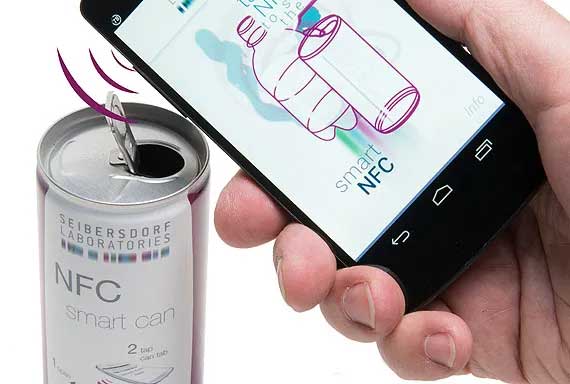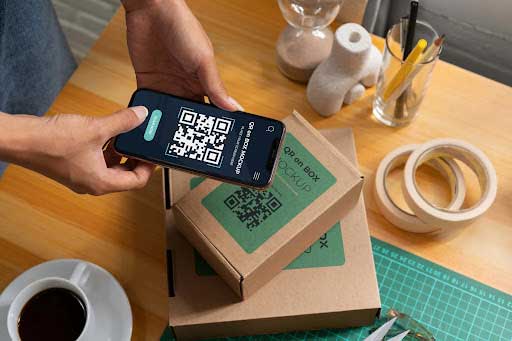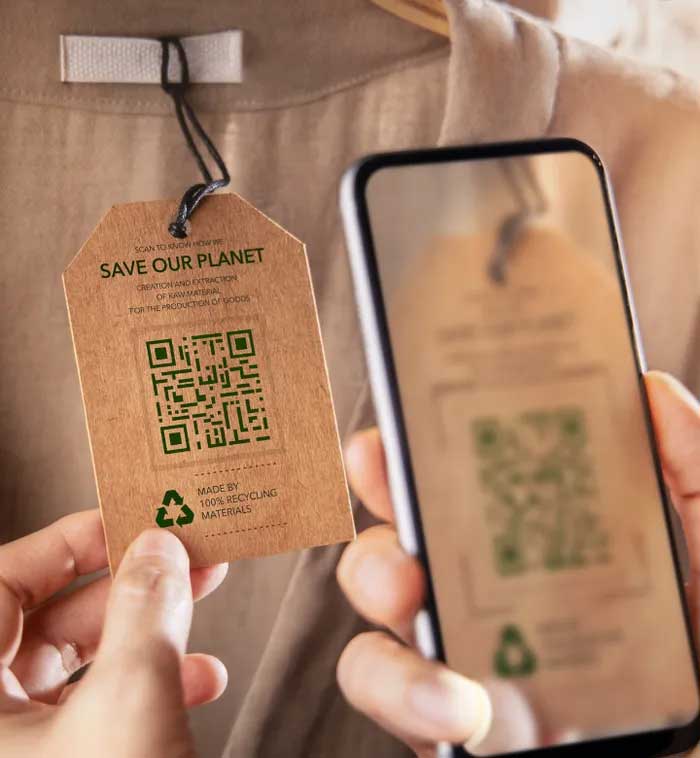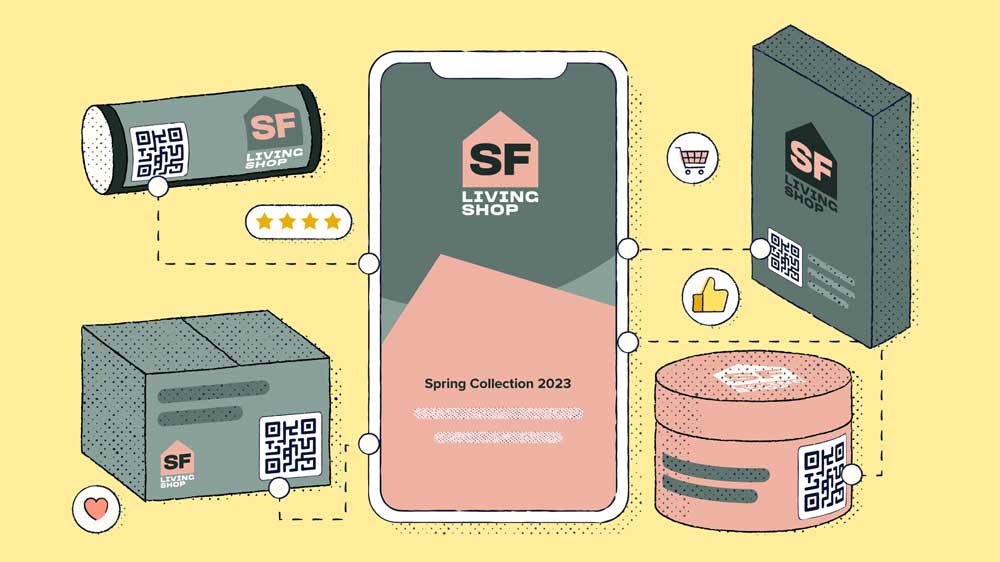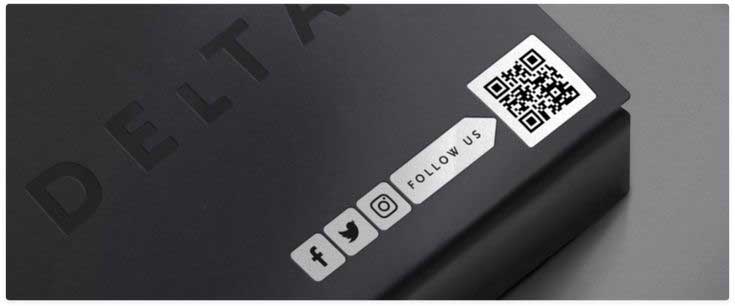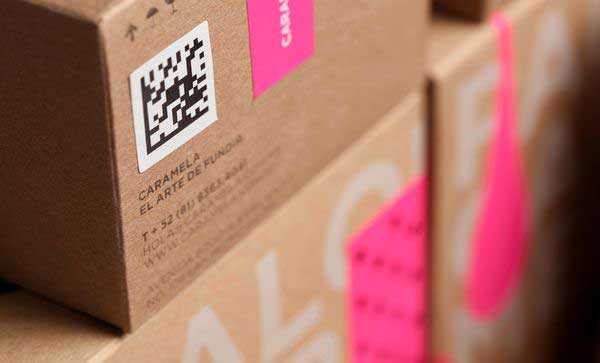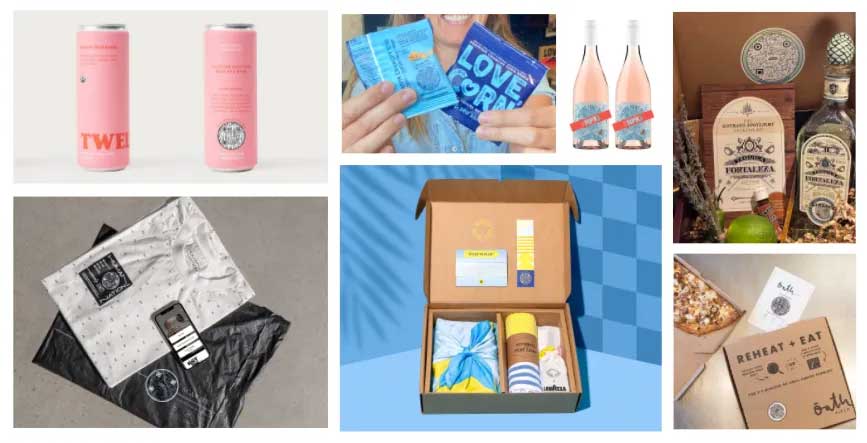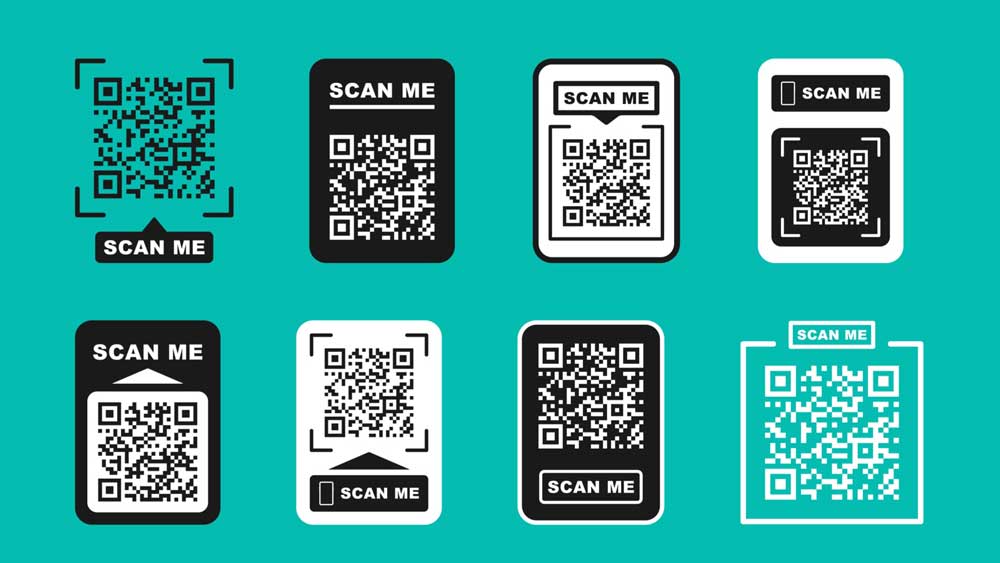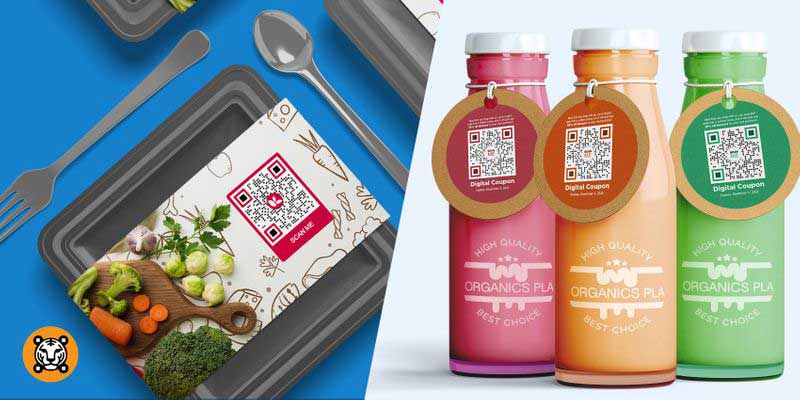Smart Packaging & QR Integrations: Revolutionizing the Consumer Experience with Technology
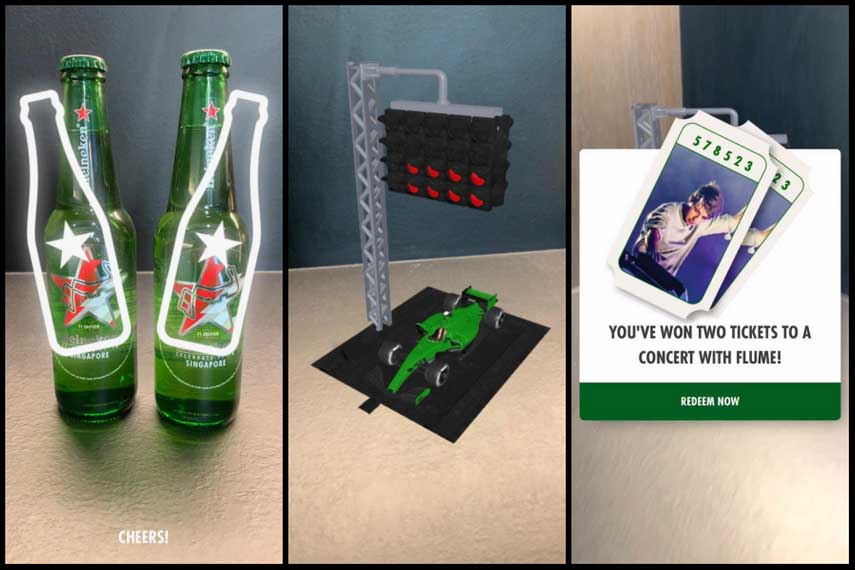
In an era of digital transformation, packaging is no longer just about protecting a product or displaying branding. It’s evolving into an interactive experience, thanks to smart packaging and QR integrations. These technologies are making it possible for brands to provide consumers with additional information, enhance convenience, and create new ways for customers to engage with their products. Through smart packaging, QR codes, and connected features, packaging is becoming a bridge between the physical and digital worlds.
In this blog post, we’ll explore how smart packaging and QR code integrations are transforming the packaging landscape. We’ll dive into the key features of these innovations, the benefits they bring to brands and consumers, and some of the most exciting examples of smart packaging in use today.
What is Smart Packaging & QR Integration?
- Smart Packaging: Smart packaging refers to packaging that incorporates technology such as sensors, NFC (Near Field Communication), RFID (Radio Frequency Identification), or QR codes to provide real-time data or enhance the consumer experience. These technologies can communicate with devices, such as smartphones or other connected systems, to offer additional functionalities like tracking, authentication, or interactivity.
- QR Code Integration: QR (Quick Response) codes are two-dimensional barcodes that can be scanned by a smartphone or other QR code readers. When integrated into packaging, QR codes enable consumers to access additional information about a product, such as usage instructions, product details, promotions, or even interactive content. QR codes are a simple and effective way to connect the physical packaging with the digital world.
Together, smart packaging and QR code integration enable consumers to access valuable information and enhance their purchasing experience, while also providing brands with opportunities to engage their audience in new ways.
Why Smart Packaging & QR Integration Are Gaining Popularity
The rise in popularity of smart packaging and QR code integrations can be attributed to several key factors:
- Consumer Demand for Transparency and Information: As consumers become more informed and demanding, they seek additional product information. Smart packaging, with QR code integrations, allows brands to provide transparent and easily accessible details about the product, such as sourcing, ingredients, sustainability efforts, and usage instructions.
- Convenience and Interactivity: QR codes provide a quick and convenient way for consumers to engage with a product. By simply scanning the code, consumers can access a wealth of information and personalized experiences, such as exclusive offers, product registration, or digital loyalty programs.
- Brand Engagement and Marketing: QR codes and smart packaging enable brands to connect with their customers beyond the point of sale. Through smart packaging, brands can deliver tailored content, promotions, and interactive experiences that enhance customer loyalty and foster ongoing engagement.
- Authentication and Anti-Counterfeiting: In industries like pharmaceuticals, luxury goods, and food safety, smart packaging and QR codes are increasingly used to ensure product authenticity. Consumers can scan QR codes to verify the legitimacy of a product, providing peace of mind and reducing the risk of counterfeiting.
- Data Collection and Insights: Brands can use QR codes to gather valuable data on consumer behavior, such as how often a code is scanned, what content is being accessed, and which products are most popular. This data helps brands refine their marketing strategies and improve their offerings.
Key Features of Smart Packaging & QR Code Integrations
Smart packaging and QR code integration can offer a wide range of features that enhance both the consumer and brand experience. Some key features include:
- Interactive Content: QR codes can lead to product videos, tutorials, augmented reality experiences, and exclusive content that engages consumers in a more meaningful way. This creates a deeper connection between the brand and the consumer.
- Product Tracking and Traceability: Smart packaging can be integrated with RFID and NFC tags that allow consumers to track a product’s journey, from manufacturing to delivery. This helps brands provide transparency in their supply chain and offers consumers peace of mind about the authenticity and origins of the product.
- Personalized Offers: Brands can use QR codes to provide personalized promotions or discounts based on consumer behavior. By scanning the QR code, customers can receive tailored offers, exclusive access to sales, or loyalty rewards, enhancing the overall shopping experience.
- Sustainability Tracking: With growing interest in sustainability, brands can use smart packaging to communicate their environmental initiatives. QR codes can provide information on how to recycle packaging, reduce waste, or the company’s efforts to use eco-friendly materials, making it easier for consumers to make informed and responsible choices.
- Authentication and Anti-Counterfeit Features: Some products, particularly in the luxury and pharmaceutical industries, use QR codes linked to a secure database to verify authenticity. This gives consumers confidence that they are buying genuine products, particularly in markets vulnerable to counterfeiting.
Benefits of Smart Packaging & QR Integration for Brands and Consumers
- For Brands:
- Increased Consumer Engagement: QR codes and smart packaging enable brands to provide a dynamic, interactive experience, encouraging repeat engagement with customers. This can lead to increased brand loyalty and customer retention.
- Data-Driven Insights: Brands can gather valuable insights into consumer behavior through QR code scans. This data helps brands refine their marketing strategies and improve product offerings.
- Cost Savings: Smart packaging can help reduce packaging waste and optimize logistics. By tracking products more accurately and providing real-time data, brands can streamline operations and reduce costs.
- Enhanced Marketing Opportunities: QR code integrations offer brands a powerful marketing tool to promote new products, campaigns, and events. QR codes can be used in advertising, print media, and social media to drive traffic and awareness.
- For Consumers:
- Convenience: QR codes provide a fast and convenient way to access detailed product information, instructional videos, and promotions without needing to search for it elsewhere.
- Enhanced Transparency: Consumers can instantly verify product authenticity, track the product’s journey, and gain insights into sustainability practices, fostering trust and confidence in the brand.
- Personalized Experience: QR codes can offer consumers tailored experiences, from receiving personalized discounts to unlocking exclusive content, enhancing the overall shopping experience.
- Eco-Friendly: By enabling digital interactions, smart packaging reduces the need for printed materials, helping brands lower their environmental footprint while providing valuable information digitally.
Case Studies: Leading Examples of Smart Packaging & QR Integrations
Heineken:
Heineken has embraced smart packaging to create an engaging experience for consumers. The brand uses augmented reality (AR) features that can be unlocked through QR codes on their packaging. These codes provide users with interactive content, including games, virtual tours, and product information, creating an immersive experience that strengthens brand loyalty.
Nestlé:
Nestlé has incorporated QR codes into its packaging for several of its products, enabling consumers to scan the code and access detailed information about ingredients, sourcing, and nutritional facts. This transparent approach helps consumers make informed decisions and builds trust in the brand’s commitment to quality.
L’Oréal:
L’Oréal has integrated QR codes into the packaging of its cosmetics products, enabling users to access product tutorials, beauty tips, and reviews. The brand also uses QR codes for product registration, promotions, and to verify the authenticity of its products, providing a seamless and interactive consumer experience.
Chivas Regal:
Chivas Regal, a luxury whisky brand, uses smart packaging with QR code integration to verify the authenticity of its bottles. Consumers can scan the code to confirm that they are purchasing a genuine product, which helps the brand fight counterfeiting and gives customers peace of mind.
Challenges in Implementing Smart Packaging
While the potential of smart packaging and QR code integration is vast, there are some challenges that brands must navigate:
- Cost of Implementation: Developing and integrating smart packaging systems can be costly, especially for smaller brands. The initial investment in technology, packaging materials, and development can be a barrier to entry.
- Consumer Education: Not all consumers are familiar with QR codes or how to use them. Brands need to ensure that the process is easy to understand and that the QR code provides real value, such as detailed product information or interactive content.
- Technology Dependence: The success of smart packaging relies heavily on technology, and not all consumers may have access to smartphones or be willing to use QR codes. Brands must consider how to make the technology accessible and useful to a broad audience.
- Security Concerns: As with any digital integration, there are concerns about data privacy and security. Brands must ensure that consumer data gathered via QR codes is handled securely and that their systems are protected from cyber threats.
How You Can Incorporate Smart Packaging & QR Integrations in Your Designs
As a designer or brand, here’s how you can incorporate smart packaging and QR code integrations into your packaging designs:
- Incorporate Easy-to-Scan QR Codes: Place QR codes in clear, prominent locations on the packaging to make them easy for consumers to find and scan. Ensure that the codes are large enough to be easily read by mobile devices.
- Offer Added Value: Use QR codes to unlock valuable content such as product tutorials, promotions, or brand stories. Make sure the experience is engaging and adds tangible benefits for the consumer.
- Ensure Sustainability: Focus on creating smart packaging that is also sustainable. Use recyclable materials for packaging and limit the environmental footprint of any technology used.
- Create Interactive Experiences: Use QR codes to integrate augmented reality (AR) or gamification elements that increase consumer interaction and make the product experience more memorable.
- Provide Transparency and Authenticity: Use QR codes to provide consumers with product sourcing details, nutritional information, or authentication features, fostering trust and transparency.
Conclusion
Smart packaging and QR code integrations are reshaping the packaging landscape, offering brands new opportunities to engage consumers in meaningful ways while providing added value and transparency. By incorporating these technologies into packaging designs, brands can enhance the consumer experience, improve their marketing strategies, and build stronger connections with their audience.
As the demand for smarter, more interactive packaging grows, embracing smart packaging and QR code integrations will become essential for staying ahead of the curve and delivering a seamless, connected experience that meets the needs of today’s tech-savvy consumers.
References
Heineken, 2023. Heineken’s Augmented Reality Packaging Experience. Available at: www.heineken.com [Accessed 2 March 2025].
Nestlé, 2022. Nestlé’s Transparent Packaging with QR Integration. Available at: www.nestle.com [Accessed 2 March 2025].
L’Oréal, 2023. L’Oréal’s Interactive QR Packaging for Beauty Products. Available at: www.loreal.com [Accessed 2 March 2025].
Chivas Regal, 2022. Chivas Regal Uses Smart Packaging to Authenticate Products. Available at: www.chivas.com [Accessed 2 March 2025].
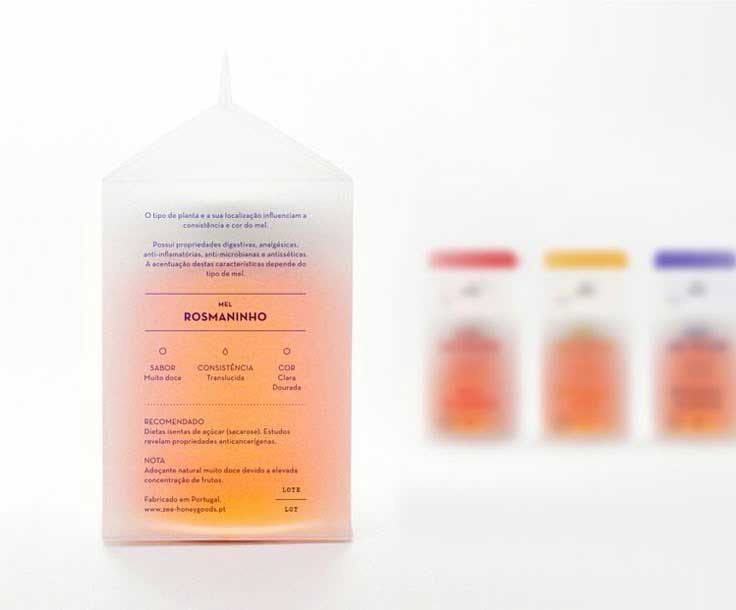
In the world of packaging design, the trend toward minimalist and transparent packaging is rapidly gaining momentum. As consumers become…
